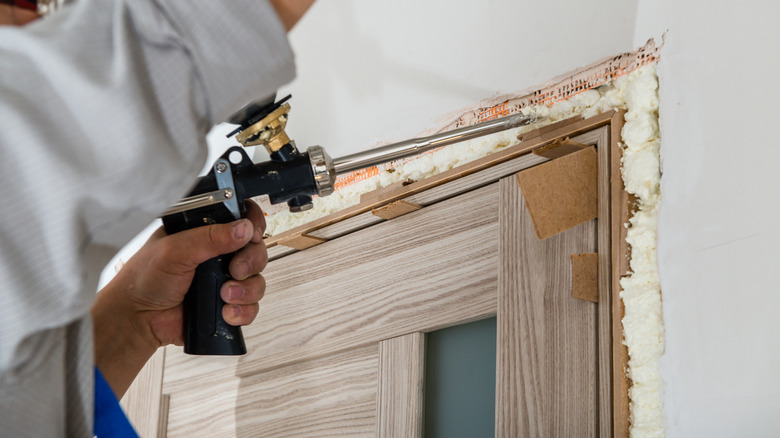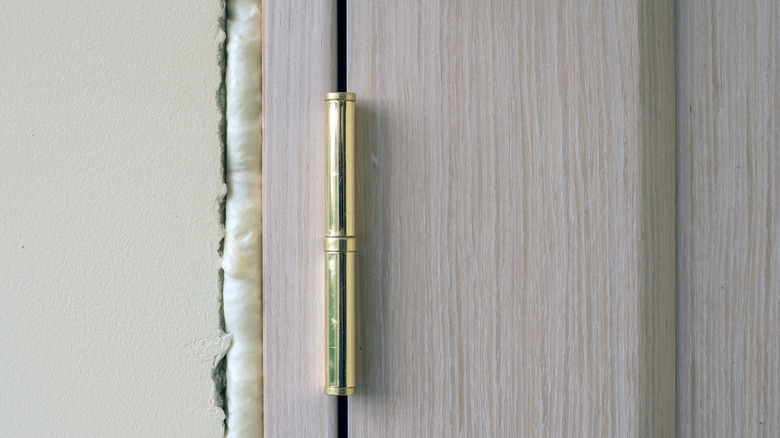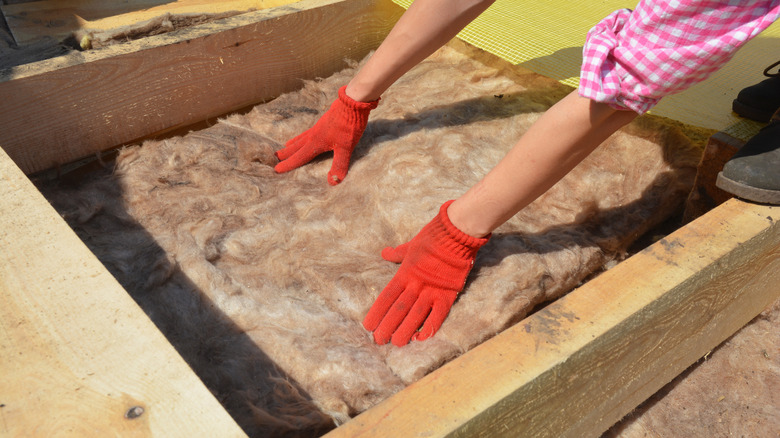Are DIY Spray Foam Insulation Kits Worth Buying? Our General Contractor Weighs In
If you have cracks and gaps around windows or doors in your home, you might be considering purchasing a DIY spray foam insulation kit to help protect your living space from drafts. One of the main reasons why you need insulation in your home is to help regulate the temperature, which will save you money on heating and cooling costs. DIY spray foam kits offer an easy way to insulate awkward areas. But as with any DIY kit, there is the risk of user error and mistakes when applying spray foam insulation yourself. This might leave you wondering whether DIY foam insulation kits are even worth buying. We spoke with Matthew DiBara, fourth-generation contractor and co-founder of The Contractor Consultants, to get the answer. He revealed that these DIY kits are worth it for small insulation projects.
"DIY spray foam insulation kits can be appealing for homeowners looking to improve insulation in their homes, particularly in areas that are difficult to reach or have unique structural features," DiBara shared in an exclusive interview with House Digest. "These kits allow for more flexibility and can be cost-effective if you are tackling small to medium-sized projects and have some DIY experience. However, they often require careful handling and precise application to be effective and safe." Luckily, DiBara shared more about what you need to know before purchasing DIY spray foam insulation.
DIY spray foam insulation is great for small projects
DIY spray foam insulation is better for small projects, so you might want to purchase it if you need to fill tight openings around your windows, doors, or floor joists, for example. For those wondering how larger projects should be handled, Matthew DiBara shared his insight. "For larger projects or whole-home insulation, professional installation might be more cost-effective in the long run due to the complexity of the application and the potential for higher energy efficiency with professional-grade materials," the expert explained while speaking exclusively with House Digest.
He also revealed why you should think twice about using DIY spray foam for certain projects. These include whole home installations, significant renovations, or any insulation applications near electric or plumbing structures. "These types of projects often benefit from professional equipment and expertise to ensure that the insulation is applied evenly and achieves the desired R-value across all areas," DiBara said. Hiring professionals to tackle these types of large-scale insulation work will ensure the job is up to code and that you avoid causing damage and creating any potential electrical or hidden fire hazards in your house.
Tips for DIY insulation beginners
Even if you are new to using DIY spray foam insulation, you can still achieve your desired results. You just have to stick to beginner-friendly projects. "Small-scale projects are ideal for newbies using DIY spray foam insulation kits," Matthew DiBara explained while speaking exclusively with House Digest. "These include sealing gaps and cracks around windows and doors, insulating small attic spaces or around HVAC ductwork, and addressing other small areas where air leaks are detected. These kits are particularly useful for spot treatments where precise application can help improve the overall energy efficiency of the home."
Along with foam spray, batt insulation is also commonly used in DIY insulation projects. This material is typically crafted out of either fiberglass or wool. Because batt insulation is such a different texture and structure than foam, you might be wondering where to use what. "Spray foam insulation is best used in situations where air leaks are a significant concern, or where it is difficult to use traditional batt insulation, such as in irregularly shaped areas or around obstructions," DiBara shared. Foam does a great job of keeping air out. "On the other hand, batt insulation is typically easier to install and more cost-effective for large, accessible areas with standard joist and stud spacing," the expert concluded.


